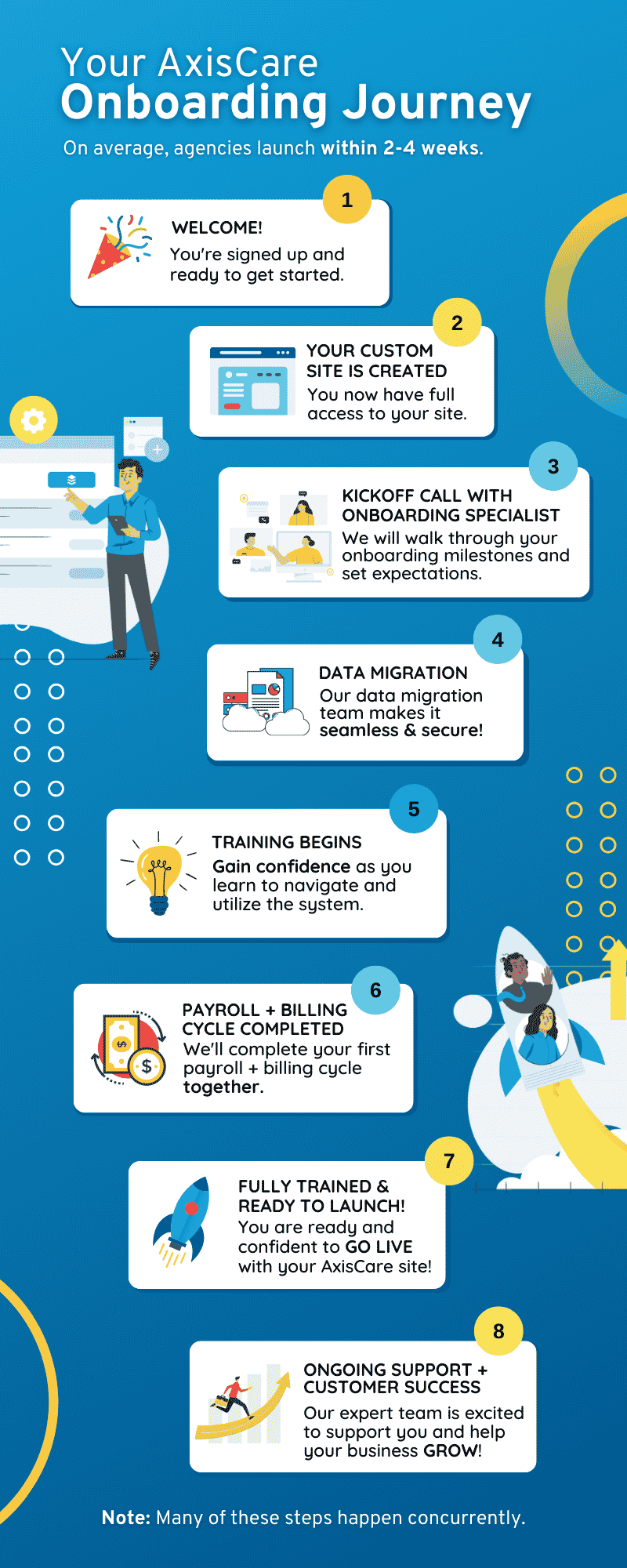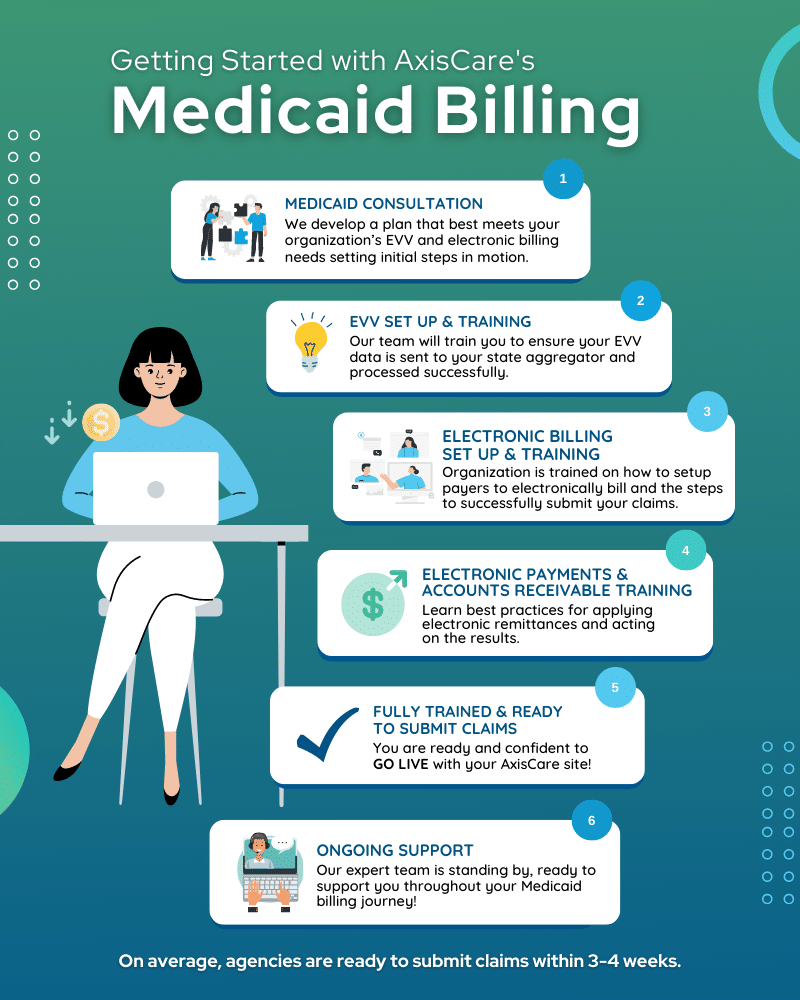Tip Sheet: 7 Methods to Improve Customer Support in Home Care Agencies
The caregiver-client connection is unlike any other customer relationship out there. It’s more up close and personal, with fewer physical and emotional barriers standing between the provider and its clientele. However, that doesn’t mean home care agencies can let their professionalism slip – clients should receive the same level of support as any other type of business.
Here are seven rules to live by if you want to deliver customer support that helps strike the perfect balance between clarity and compassion.
1. Prioritize Communication and Transparency
Whether you’re providing support directly to a client or speaking with a family member, medical topics are deeply personal and vulnerable. Communicating extremely clearly, sticking to the facts, and remaining solutions-oriented even when receiving resistance is the best way to stay on track and deliver caring, judgment-free, value-added support.
While remaining transparent is an important factor during service calls, proactive transparency can also avoid unnecessary exchanges that tie up limited support resources. For example, communicating with clients and their loved ones about care plan updates and other important changes provides them with the information they need before asking. What’s more, it empowers them to take on a more active role in their care management, which often increases adherence and improves health outcomes over time.
2. Invest in Ongoing Staff Training
Well-trained employees are efficient and helpful employees. A home care agency’s support staff need to be extensively trained and equipped to handle any number of queries that come their way. Billing support? Care plan coordination? Sensitive topics surrounding medical care? No matter the question, comprehensive training will ensure they’ve got the answers.
While training documents can certainly impart basic knowledge, the best way to learn is through out-loud practice. Running mock service calls with trainees to test their on-the-fly capabilities and adjust their approach in real time will have them feeling comfortable and ready before they conduct their first phone call or online chat.
Always remember that training is never a one-and-done task. It’s a dynamic, constantly evolving process that should be topped up quarterly, annually, or whenever support protocols are updated.
3. Implement a User-Friendly Scheduling System
It’s a simple equation: a well-running caregiver scheduling platform will lead to fewer errors, fewer missed appointments, and less confusion on the client side. If home care agency administrators can run a tight ship when it comes to filling available shifts quickly and intelligently pairing caregivers with clients, there will be fewer snags to iron out.
4. Leverage Technology for Better Support
Phone conversations can be plenty productive, but these days, many organizations offer multiple contact options to distribute resources more evenly and properly vet their needs. For example, an automated chatbot can begin with some triage, pointing clients towards resources that can answer simpler or more frequently asked questions. It can then pass them along to a human if their needs are more complex.
Online portals and mobile apps are great companions to traditional support channels: they can create a direct line between clients and support professionals, act as a hub for FAQs, or empower clients to explore on their own. For especially complex cases or medical questions, telehealth integrations can connect clients directly with a health practitioner. The option to quickly meet with a specialist at a distance is an excellent way to optimize resource allocation while increasing the accessibility of care services.
5. Personalize Care Plans for Each Client
Clients contact home care customer service because their needs aren’t being met in some way. By that logic, the more personalized and detailed the care plan, the fewer questions clients will have on a regular basis.
A strong care plan will proactively address and accommodate each individual’s needs and preferences, reducing the kinds of gaps and misunderstandings that often trigger support calls. For example, if the plan clearly outlines expectations surrounding scheduling and service details, the support team will receive far fewer messages about appointment timing and unmet expectations.
6. Ensure Prompt Response Times
When someone picks up the phone or sends a message to contact support, their expectation is to receive the help they need, but unfortunately, it’s not always met.
Providing quick, reliable, and friendly responses to client inquiries and concerns may sound like the bare minimum. But in reality, it will put your agency head and shoulders above countless other organizations that cut corners on training and vetting their support teams.
To keep things running smoothly, ensure your support staff have easy access to clients’ information while still respecting HIPAA, and set internal benchmarks for a successful interaction. For example, all emails should receive a reply within 72 hours, and voicemails should be returned with a call within 24 hours.
7. Build Strong Relationships With Clients and Families
Customer support is a great opportunity for agencies to build trust with their client base; a positive interaction with support will leave clients feeling seen, heard, and valued.
Trust-building calls or message exchanges begin with a friendly greeting, use clients’ names when addressing them for overt personalization, are conducted with empathy throughout, and conclude with a proactive follow-up a day or two after the interaction. Follow this simple blueprint, and your agency will, in turn, enjoy stronger loyalty and satisfaction.
Enhance Customer Support With AxisCare
Equip your customer care teams with a home care platform that supports mobile app compatibility, two-way chat, and more! Request a free demo to learn more about how we can tailor our solution to your needs.





